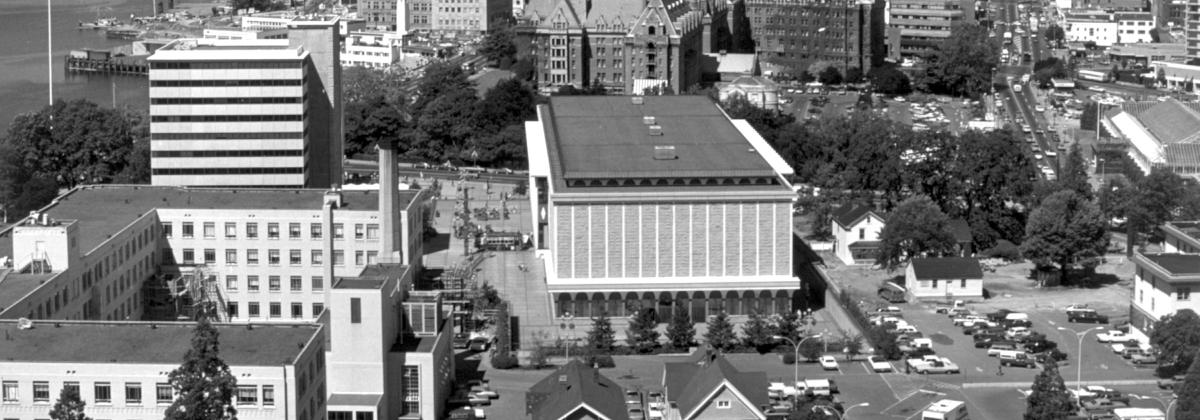
Modernization
Learn more about government’s intention to modernize the museum to protect our historic holdings and provide better access to our collections.

Since the early days of colonial settlement in Victoria, the museum has collected and preserved the province’s significant artifacts and specimens for future generations.
The museum was founded in 1886 in response to a petition signed by 30 prominent citizens. It was housed in a single room adjoining the Provincial Secretary’s office in the Capitol Buildings, which were nicknamed “the Birdcages”. John Fannin, an avid outdoorsman and collector and gifted taxidermist, was appointed its first curator.
The provincial government has collected archival records since 1894, when relevant material was preserved by the Legislative Library. In 1908 the Provincial Archives was established as a separate institution, mandated to collect material of provincial significance.
Over the next 12 years, the museum was relocated twice, first to the former Supreme Court building, and then in 1898, to the East Wing of the newly constructed Legislative Buildings. During those years, approximately 3,700 people registered their visit to the museum each year (actual attendance was probably two to three times that number).
In 1913, the provincial government proclaimed the Museum Act, giving the museum formal operating authority and defining its objectives:
Over the next 30 years, the museum grew by leaps and bounds. New space was made for ethnological artifacts when the basement of the East Wing was excavated in 1921; William Newcombe, son of C.F. Newcombe, and Dr. Ian McTaggart Cowan joined the museum as assistant curators of Biology; research papers were published; and visitors from across Canada and throughout the United States—including President Theodore Roosevelt—took visitation to new heights.
In 1941 six vacant lots at the corner of Belleville and Douglas Streets in Victoria were transformed into Thunderbird Park, where totem poles from the museum’s collection were displayed. Just over 10 years later, deterioration of the poles had become a serious concern, and Anthropology Curator Wilson Duff began a pole restoration program. The totem poles currently on display at Thunderbird Park are replicas of the originals, which have been moved inside, where they can be properly preserved.
The museum continued to grow and to attract more visitors. By 1961, estimated annual attendance had reached 100,000. The province recognized that the time had come to expand the museum, and in 1963 Premier W.A.C. Bennett announced plans to build a new museum and archives as a Canadian centennial project. Three years later, Her Majesty Queen Elizabeth the Queen Mother dedicated the cornerstone for the current museum exhibits building. In 1969, the second museum building, the Fannin Tower, was finished, and the museum staff and collections made the formal move into these new facilities.
In 1977, The 12,000-year Gap and the First Peoples Galleries opened to the public, followed by Living Land, Living Sea, the first phase of the permanent Natural History galleries, in 1979.
The museum celebrated its centennial in 1986, and since then has continued to grow, presenting exciting and popular temporary exhibits and completing the second phase of its Natural History galleries, Open Oceans.
On April 1, 2003, through the proclamation of a new museum act, the BC Archives, Helmcken House, the Netherlands Carillon, Thunderbird Park, St Ann’s Schoolhouse and the Royal BC Museum came together as the Royal BC Museum Corporation, creating a unique cultural precinct in the heart of British Columbia’s capital city. Although its buildings reside in Victoria, the Corporation reaches every region of the province through its website, exhibits and services, and is responsible to all citizens of the province.